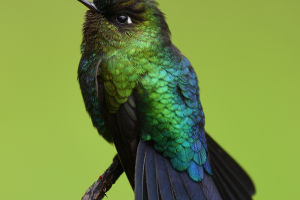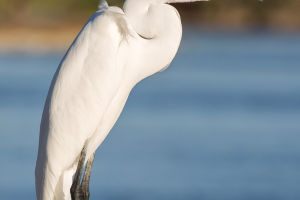Dragonflies, ancient and elegant insects, are widely regarded as some of the most beautiful insects in nature. Globally, there are about 6,500 known species of dragonflies in a variety of habitats, including bodies of flowing water, grasslands, woods, and deserts.
Dragonflies have survived on earth for hundreds of millions of years, and their flying skills are superb, earning them the nickname "King of Flying." However, humans' understanding of dragonflies is limited to this.
Despite their long history, a small dragonfly has troubled scientists for many years. As such, human beings have not fully revealed the mystery of dragonflies.
While humans are at the top of the food chain on earth, when it comes to the time of appearance on the earth, humans are not highly ranked. Many creatures, such as insects, appeared long before humans, and dragonflies are one of them. Compared with humans, dragonflies can be considered relatively primitive insects.
Adult dragonflies emerge in a variety of colors, ranging in shades from metallic to pink. Compared with other insects, their bodies are huge, some with a wingspan of 16 cm, while even the smallest species have a wingspan of 2 cm.
Dragonflies have the most eyes of any insect in the world. Their eyes are large and bulging, occupying most of the head. Dragonflies have three single eyes, and compound eyes are composed of more than 28,000 small eyes. They have excellent eyesight and can look up, down, forward, and backwards without turning their heads.
Dragonflies are excellent fliers, able to hover in the air, turn quickly, and chase their prey. Their wings can vibrate at a frequency of 30 times per minute, allowing them to move quickly and fly stationary through the air.
The forewings and hindwings of dragonflies can move independently, meaning they can fly and maneuver in a variety of ways. Many dragonflies can even fly for long periods and distances, traveling hundreds of kilometers.
Dragonfly wing muscles function best when they are warm. If it's cool, the insects often flap their wings to generate heat before they actually take off. The speed and agility of the dragonfly make it one of the most efficient flying predators. The prey is usually small flying bugs, but some dragonflies routinely eat prey as much as 60 percent of their body weight.
In the ecosystem, dragonflies are important predators, eating a large number of small insects and other arthropods. They are also a food source for other animals, including birds, lizards, and large insects. Dragonflies also promote plant reproduction through pollination.
Despite being excellent fliers, dragonflies face threats from human activities such as urbanization, agricultural expansion, and water pollution. Many dragonfly species are extinct or endangered.
As such, protecting dragonflies and their habitats has become an important task to ensure that they can continue to play their important roles in our ecosystems in the future.
Aside from their ecological value, dragonflies have many cultural and mythological meanings. In Japan, dragonflies are considered a symbol of luck, representing success and victory. In the native cultures of Europe and America, dragonflies are regarded as mysterious and sacred creatures.
Dragonflies are ancient, elegant, mysterious, and beautiful insects. They play important roles in ecosystems and have cultural and mythological significance. We should take steps to protect dragonflies and their habitats so they can continue to soar through our world in the future.


